There’s been a lot of buzz surrounding the new Axis Series ratchets from Mac Tools. From the first rumblings nearly two years ago, the unveiling at the Mac Tool Fair in February, to their finally hitting the trucks in the last couple of months, the Axis Series have been one of the most anticipated hand tool releases in recent memory. Why? well, as anticipated as these ratchets were for consumers, they were and even bigger deal for Mac.
The Axis Series is the latest addition in a major revamp of the Mac Tools line. Over the last couple of years they’ve consistently upgraded core products and in each case, have produced tools among the top in their respective categories. Overhauls to screwdrivers, air tools, ratcheting wrenches, 12V and 18V cordless tools, and lots of more subtle upgrades, have produced a lineup almost unrecognizable compared to just a few years ago.
As great a couple of years as Mac Tools has had, it all still seemed to really hinge on the desperately needed Axis ratchets. Mac is a mechanics tool brand, and as the most distinguishable piece of any mechanics tool set, ratchets set the tone for the entire line. That’s not to say the previous ratchets were bad, they were tough rats with years of proven reliability under their belt, but they were lower tooth count, acceptably but not overly smooth, and failed to really stand out in today’s market where finer tooth counts have become the standard.
They may be a little late to the party, but the Axis Series ratchets have finally arrived.
Features & Design
There’s nothing traditional about the Axis ratchets. With wonderfully beveled edges, the USA emblazoned selector, a two part oblong shaped comfort grip, and thick beautiful chrome, the Axis is pleasing to both the hand and the eye. Virtually every millimeter of the tool has a contemporary touch which seems pretty gratifying after the extended wait.
The first thing I noticed when I really got to looking at the flex head ratchet is that the fork connecting the head to the handle is rather unique. The head itself is 2 pronged whereas the handle is single pronged. This is unusual as it is the handle that is typically 2 pronged. As a matter of fact, it’s the first time I’ve ever seen such a design.
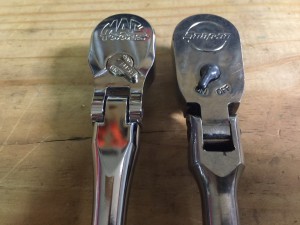
Even to the naked eye and no fancy equipment with which to test it, the reverse fork just looks stronger than the average rat. For the official reasoning I contacted Mac who had this to say:
“The AXIS ratchet has a patented dual hub gear that distributes more force to the body of the ratchet than a traditional ratchet. To distribute and absorb this force effectively, the forks needed to be reversed from the traditional design. To be clear, the reverse fork and dual hub gear work together in creating one of the toughest ratchets in the market.”
While that satisfies our curiosity about the reverse fork design, it begs yet another question, what’s a “dual hub” gear? Simply put, the pawl has contact points on both the inner and outer sides of the housing to allow for a more even distribution of force. That sounds scientific and all, but even that isn’t what really impressed me with the Axis series.
The Most Impressive Feature
“Fine tooth” ratchets (generally classified as 60+ teeth) are common these days. Nobody bats an eye at a 72 tooth ratchet anymore, but back in the day most ratchets were what we now call “coarse” meaning they had fewer teeth. 24-36 tooth designs were pretty much the standard of yesteryear, but as engine compartments and work areas got smaller, the need for a compact head design and low swing arc grew larger. With the smooth operation and low swing arc of top shelf ratchets like the Snap-On Dual 80 and Matco 88, Mac lacked a signature fine tooth ratchet to compete.
From the very first rumblings of the 90 tooth ratchet I suspected Mac had adapted the impressive 45 tooth single pawl mechanism found in the Proto XL ratchets, into a dual pawl version to arrive at 90 teeth. While the mechanisms are similar, that isn’t exactly what they did.
Rather than opt for a doubled up XL mechanism, Mac developed the concept into a similar yet distinct single pawl design, and in doing so created what is in my opinion the most impressive detail, the tooth engagement.
Tooth engagement refers to the number of teeth in contact between the gear and the pawl under load and theoretically, more engagement means more strength. For fine tooth ratchets the average is probably 7-8, stronger designs such as the Facom “Palm Control” design engage 12-13, but the Axis series engages the entire pawl for an astounding 20 tooth engagement. I’ve taken at least a couple hundred ratchets apart of various designs dating as far back as the 1930’s and this is the first one I have ever encountered one that engaged that many teeth. Even with my high expectations for these ratchets, I never anticipated that.
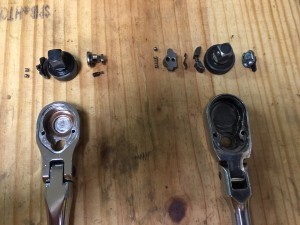
The Axis is a sealed head design. This helps keep lubrication in, dirt out, and provides longer intervals between services. Lubed from the factory with a Superlube® type grease, I was curious what Permatex Engine Assembly Lube #81950® (my go to lube for fine tooth rats) would do for performance. Having changed lubes in only one of the ratchets, I honestly couldn’t tell you which one as it affected the performance in no way whatsoever.
Performance
The downside to single pawl ratchets, especially with this much engagement is that they tend to feel a little stiffer. There’s none of that going on here. These things are butter smooth in both directions. To me, back drag (the resistance when moving the opposite direction of engagement) is probably the most important performance characteristic of a ratchet and the Axis series has almost none. Even a fastener too loose to offer any resistance at all can be removed with only nominal back pull. Combined with the 4º swing arc, there aren’t many situations where you’ll find yourself having to finish it off by hand.
For strength testing we selected 19mm bolts torqued to 150 ft.-lbs. Despite being on the upper end of the realistic range for a 3/8″ ratchet in both size and torque, it barely felt like a test. It really came down to the limitations of the bolts. We popped 150 ft.-lbs. loose without breaking a sweat. In forward testing of the 18″ model….well, this happened:
In both thru-hole and stud testing we snapped the bolts clean in two. In confirmation testing that happened between 165 and 170 ft.-lbs. By that point you’re well into 1/2″ drive range and any further testing serves no purpose beyond entertainment value.
The Axis Series isn’t short on comfort either. With a nylon alloy core ( think MacGrip drivers) wrapped in a firm yet supple rubber grip, the Comfortgrip® models provide all day comfort. They’re a tad smaller around than most soft handled ratchets, a feature that I considered desirable. It isn’t overly soft and the contours provide plenty of grip without presenting any difficulty in cleaning.
The Comfortgrip® models are a front heavy design giving a noticeable balance to the head of the ratchet. The optional metal grip evens that out and in doing so, provides a heft that (at least in the shorter models) changes the feel of the ratchet entirely. It’s simply a matter of preference, but I suspect it will be less pronounced on the longer models.
The only detail that keeps the Axis Series from achieving absolute perfection is the lack of response to the tightening of the fork screw on the flex head models. The flex head is a tension design. It’s stiff enough and holds it’s position as well as any other non-locking flex head, but if you prefer it to be very tight for whatever reason, your efforts will be futile. I removed the washers and tried it that way, but that rendered the ratchet too sloppy. It’s not a big deal, and you will be able to tighten it back should it ever loosen up, but it’s never going to be any tighter than it is off the truck.
Conclusions
Having used these ratchets exclusively for a good while now, I feel confident in their abilities. While they seemed unreasonably slow to get here, they were unquestionably worth the wait. We’ll revisit these down the road to see how they’re holding up, but I don’t anticipate any issues.
While the full selection of ratchets hasn’t been released yet, the sky is the limit for the Axis series. With their impressive combination of strength, beauty, comfort, and finesse, I suspect these ratchets will come to be widely regarded as the very best available. Mac has made huge improvements their lineup over the last couple of years and while the Axis series may be the latest addition, it certainly won’t be the last.
As always, thanks for reading and stay tuned to TIA for more from Mac Tools.

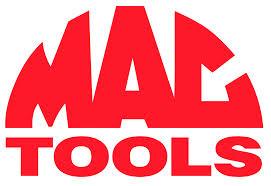
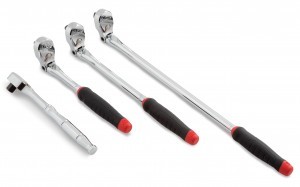
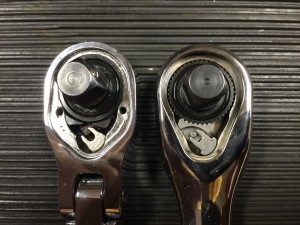
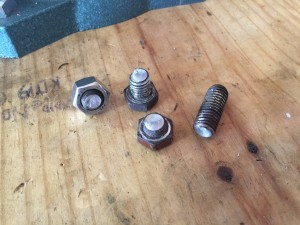
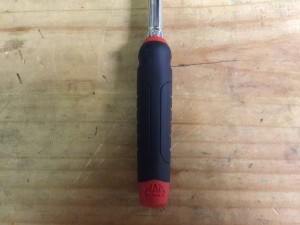
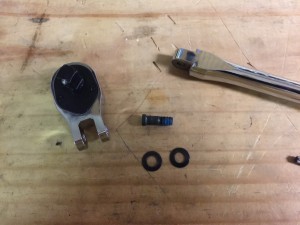
I did a quick stress evaluation using guessed at dimensions for the pivot and the math shows just about double the stress on the pivot screw with MAC as opposed to the standard configuration. This is due to the narrower internal section. I would not expect failure under normal use but the decision to change the tried and true fork design is very curious.